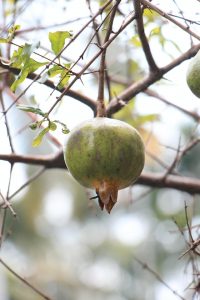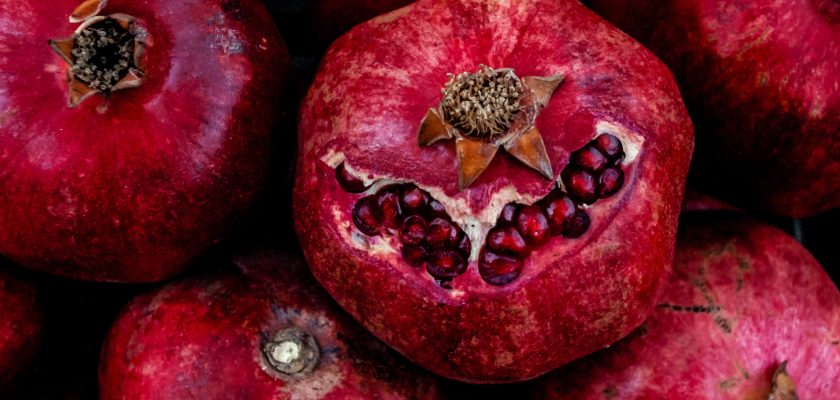Pomegranates are an exotic fruit that is available in a variety of flavors and uses. Ripening of pomegranates takes place on the tree, and you can harvest ripe fruits as soon as possible. However, determining the ripeness of a pomegranate is not always as easy as it sounds. The best way to tell if a pomegranate is ripe is to check for several of the key factors.
Besides checking the color of the fruit, it’s also important to notice other characteristics, such as weight and shape. For instance, a pomegranate that is not ripe is hollow, while one that is ripe has a leathery texture. It should also feel heavy for its size, and it should not pucker when rubbed. Also, the ripe fruit should have a burst of juice inside.

Photo by faiz Mohomed on Unsplash
In addition to these obvious characteristics, a ripe pomegranate will have a flat stem end and an angular shape. You’ll also hear a metallic sound. If a pomegranate feels spongy or hollow, it is unripe. Another sign of ripeness is when the skin splinters. To do this, scratch the skin with your fingernail.
Depending on the variety, the pomegranate’s skin will change from smooth to rough. It should also look blemish free. This is a good indicator that the fruit is ripe.
A pomegranate’s rind should also be checked for ripeness. If you see a few black spots, it may be a sign of spoilage. On the other hand, small, black spots are generally not a sign of bad quality. But, if they are larger than half an inch in diameter, they may indicate that the pomegranate has passed its prime.
Although a pomegranate’s color is not a good indicator of ripeness, its swollen appearance and juicy interior are a good indication of its readiness. When the fruit is ripe, plump arils will fill the space inside. They can be eaten right away, or stored for up to four days.

Photo by Anson Aswat on Unsplash
Ripening of a pomegranate will also require a few weeks, so be patient. After you have harvested a pomegranate, it is a good idea to inspect it every day or two. Be careful not to ripen it too fast, as it could develop mold. Even if you don’t plan on eating it right away, store the pomegranate in a cool, dry place.
If you plan on storing a pomegranate for a longer period of time, you’ll want to store it in the refrigerator. However, a pomegranate that has been stored in the fridge for more than a week will begin to turn brown, and will not taste very good. While a pomegranate that has not been ripe can be frozen for up to six months, it’s best to use it within a year.
Pomegranates are a tasty treat. Try mixing them in your salads, or adding them to a soup. Or, if you are looking for something special, try making a pomegranate cocktail. These little fruits have a rich flavor and are high in antioxidants.
